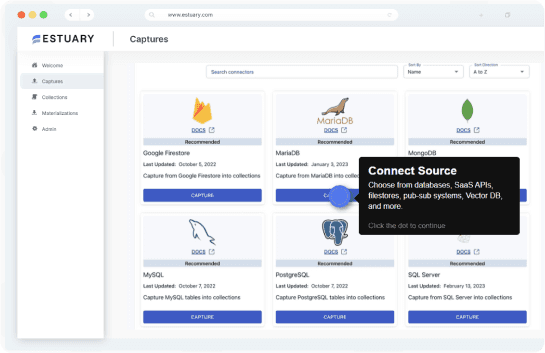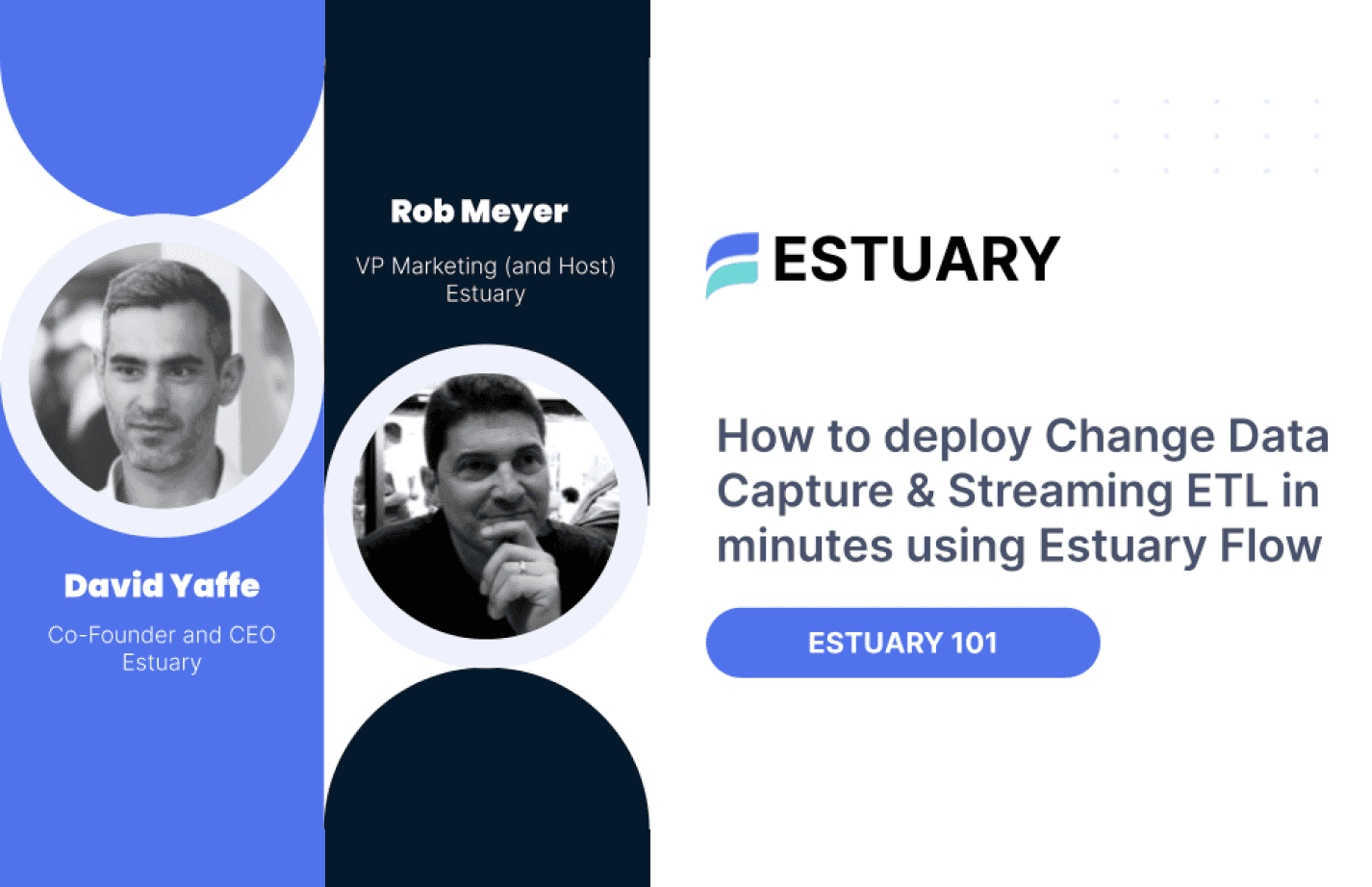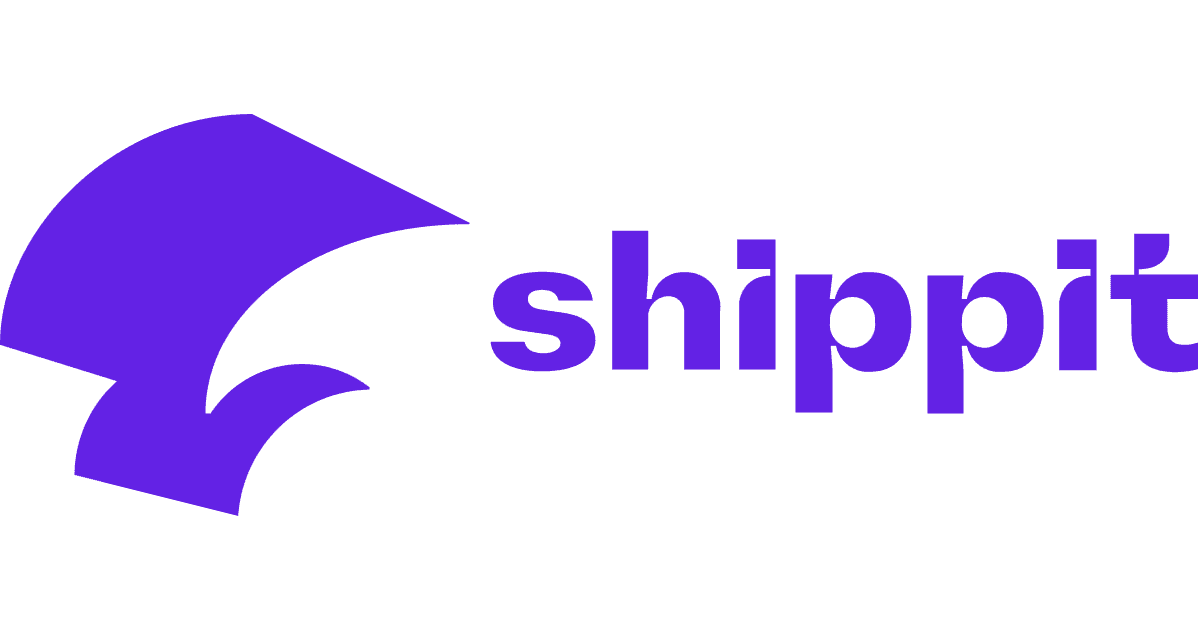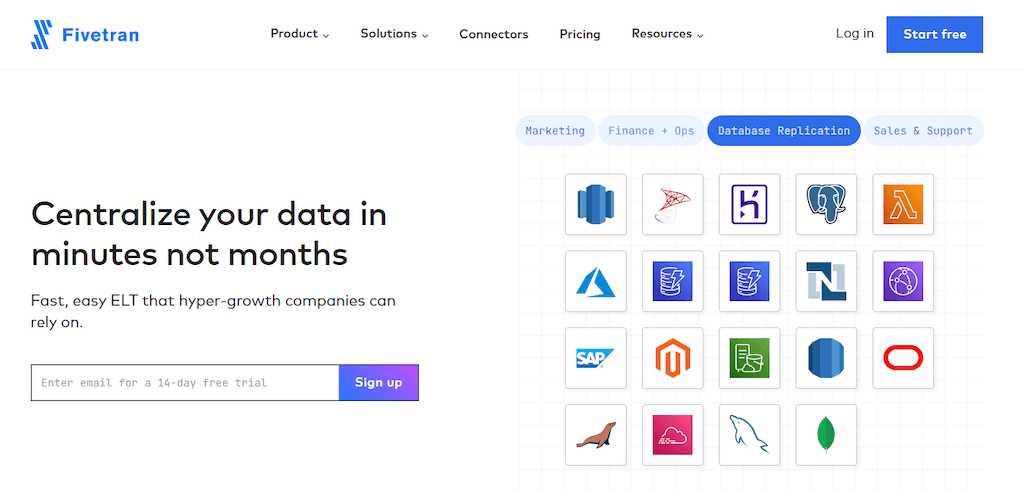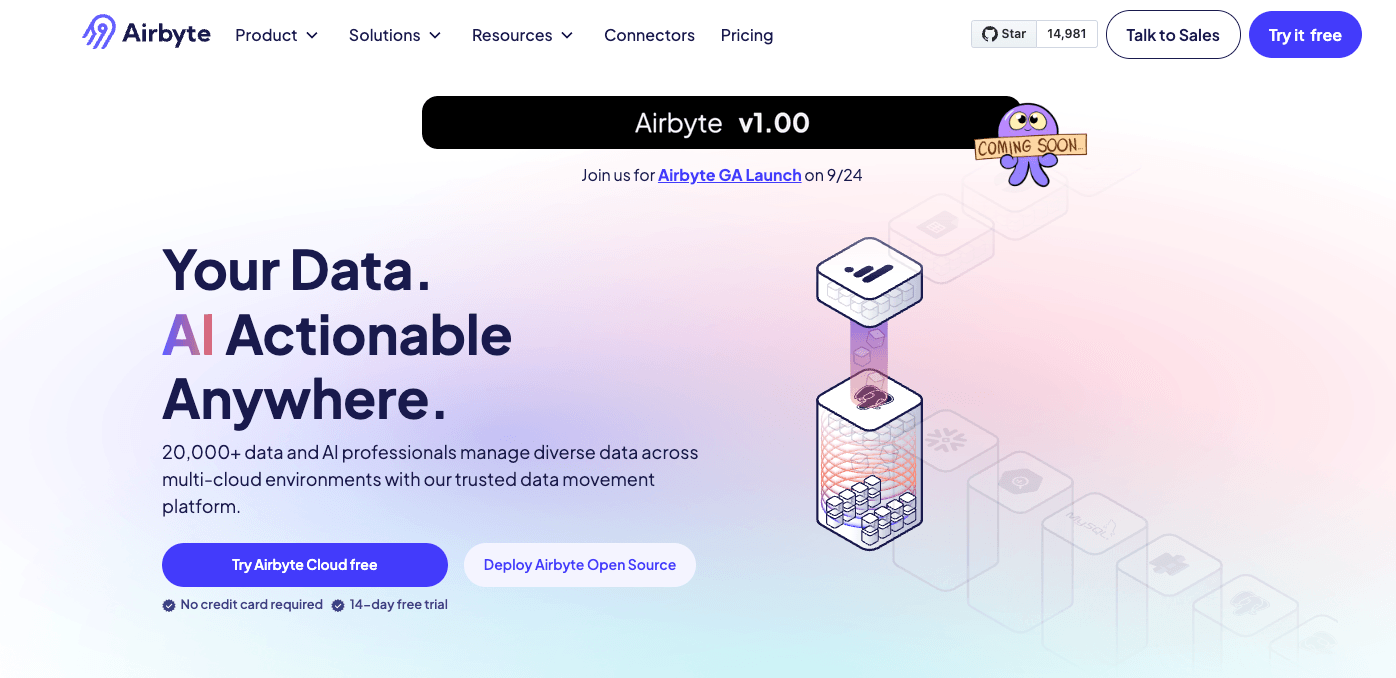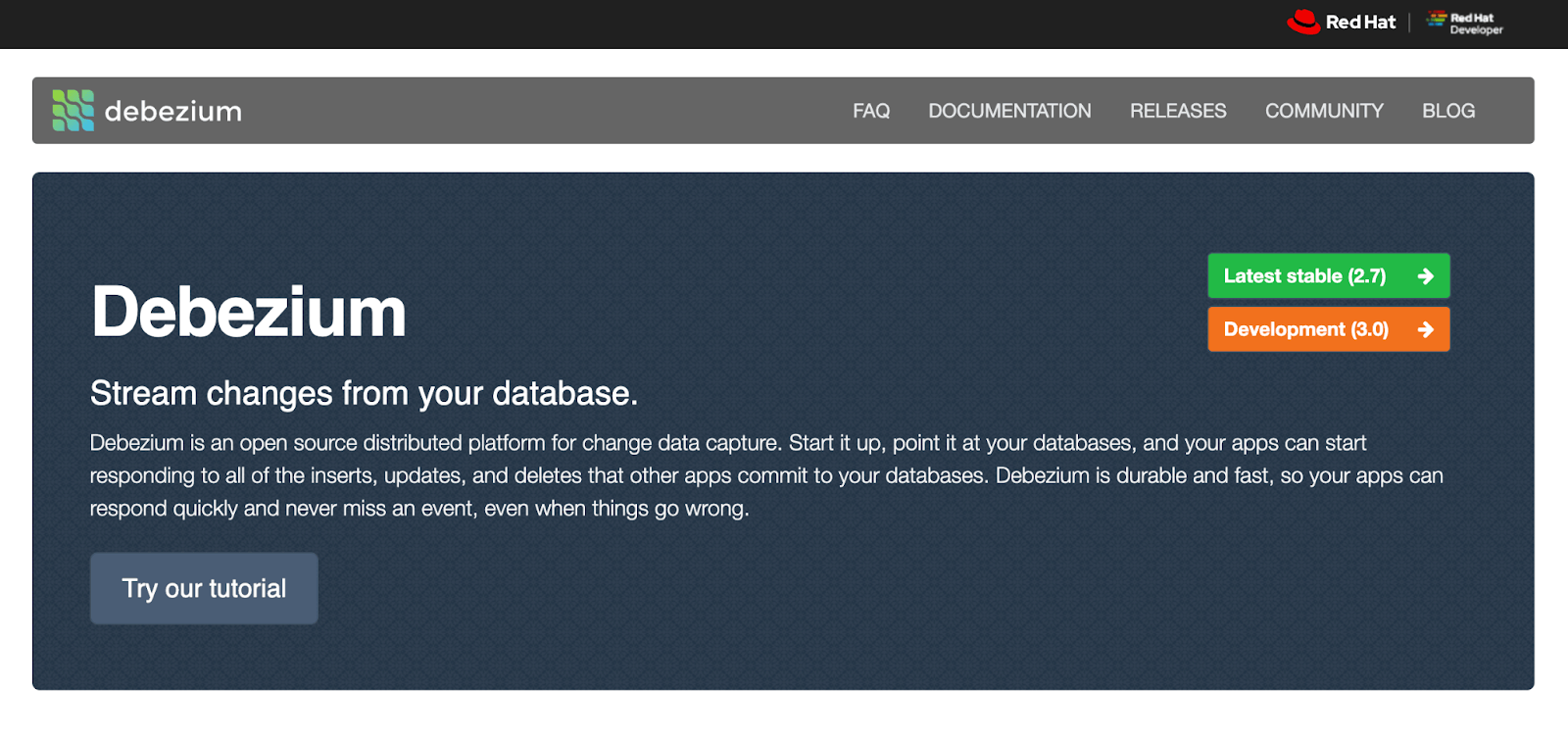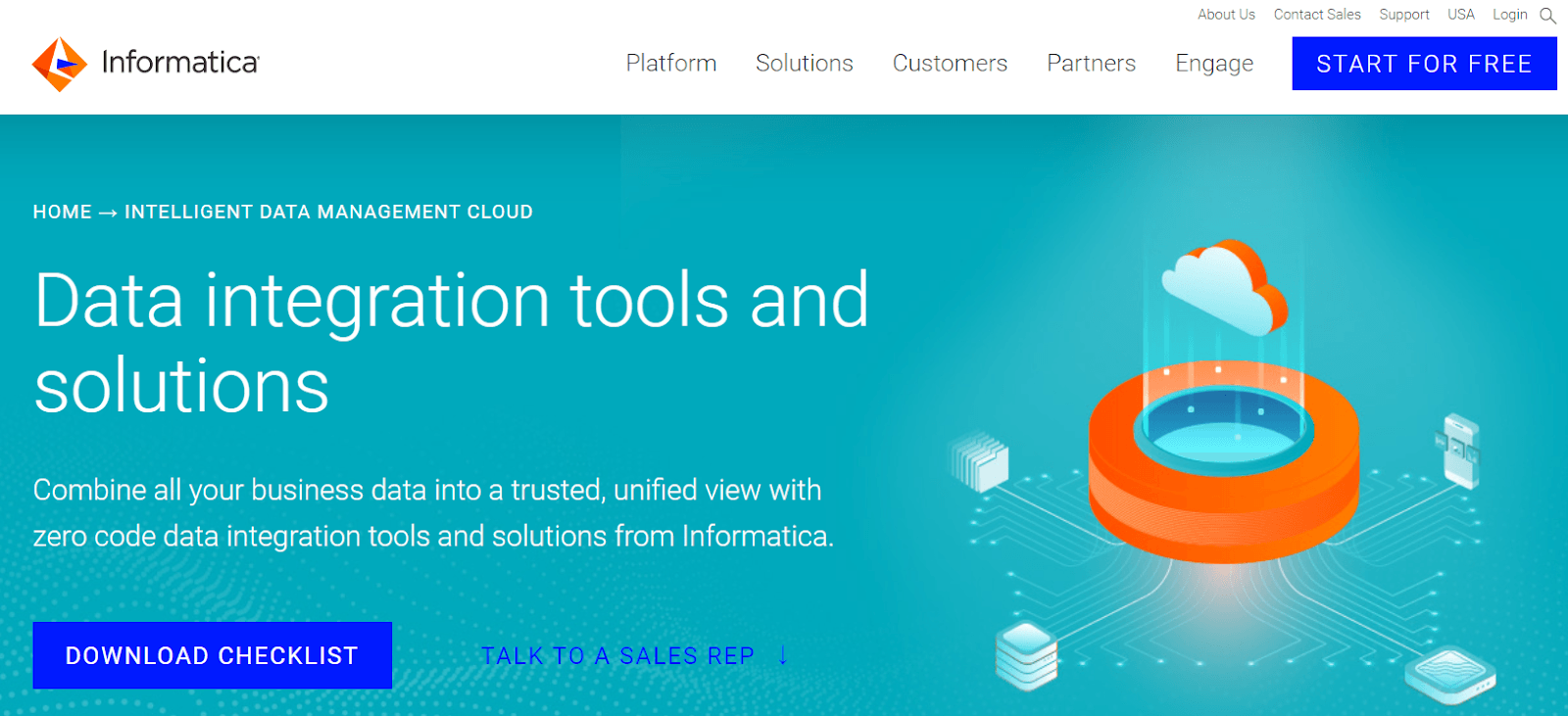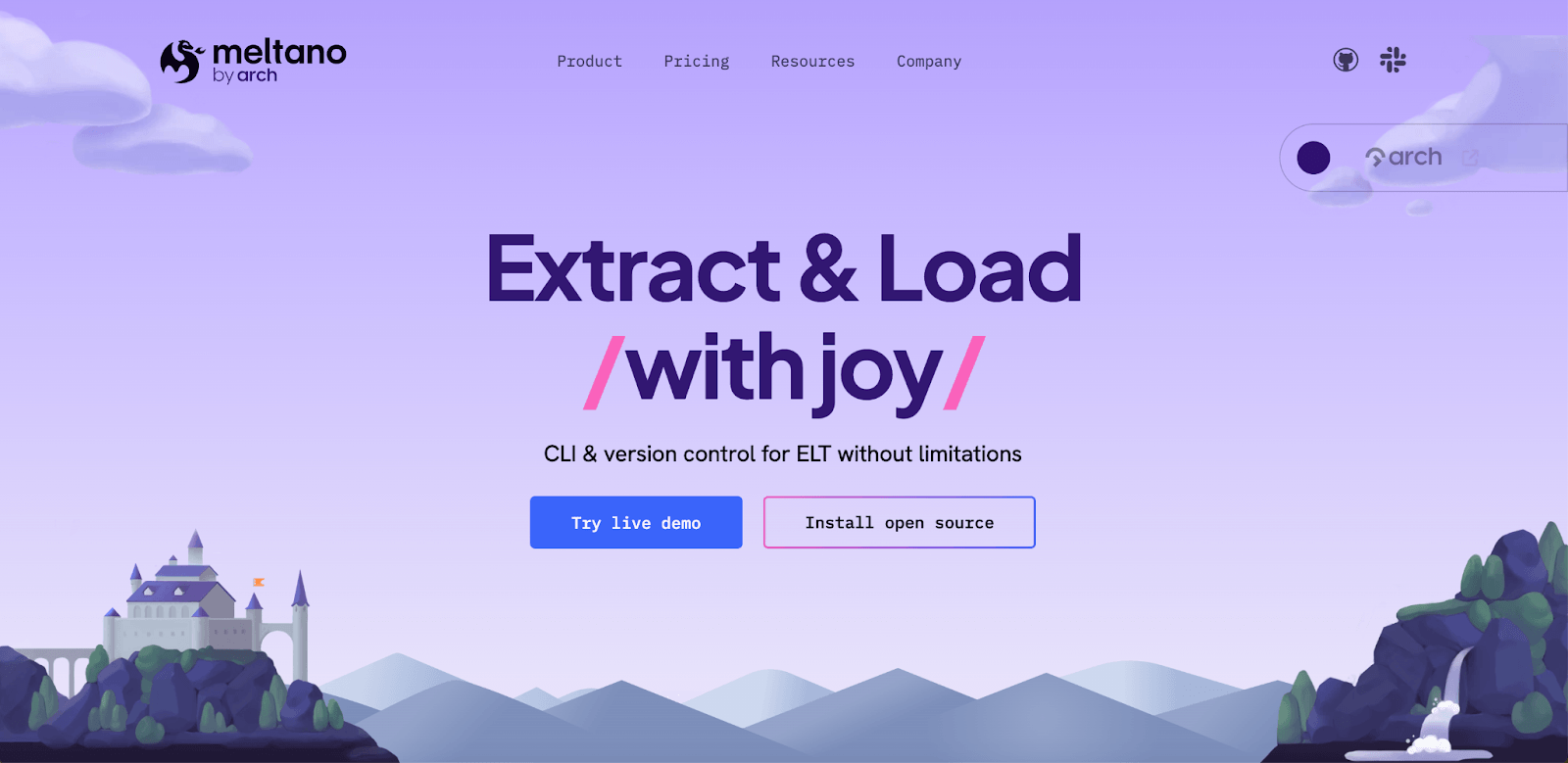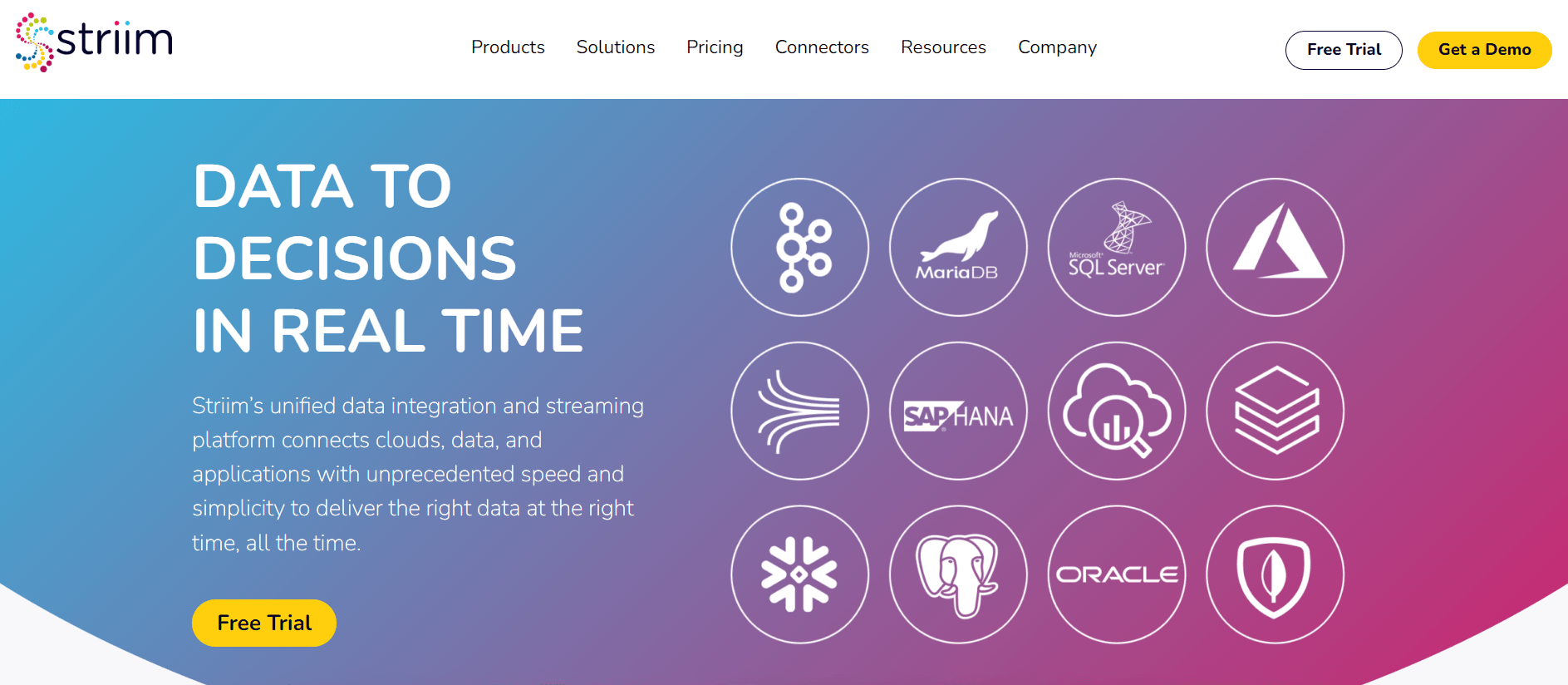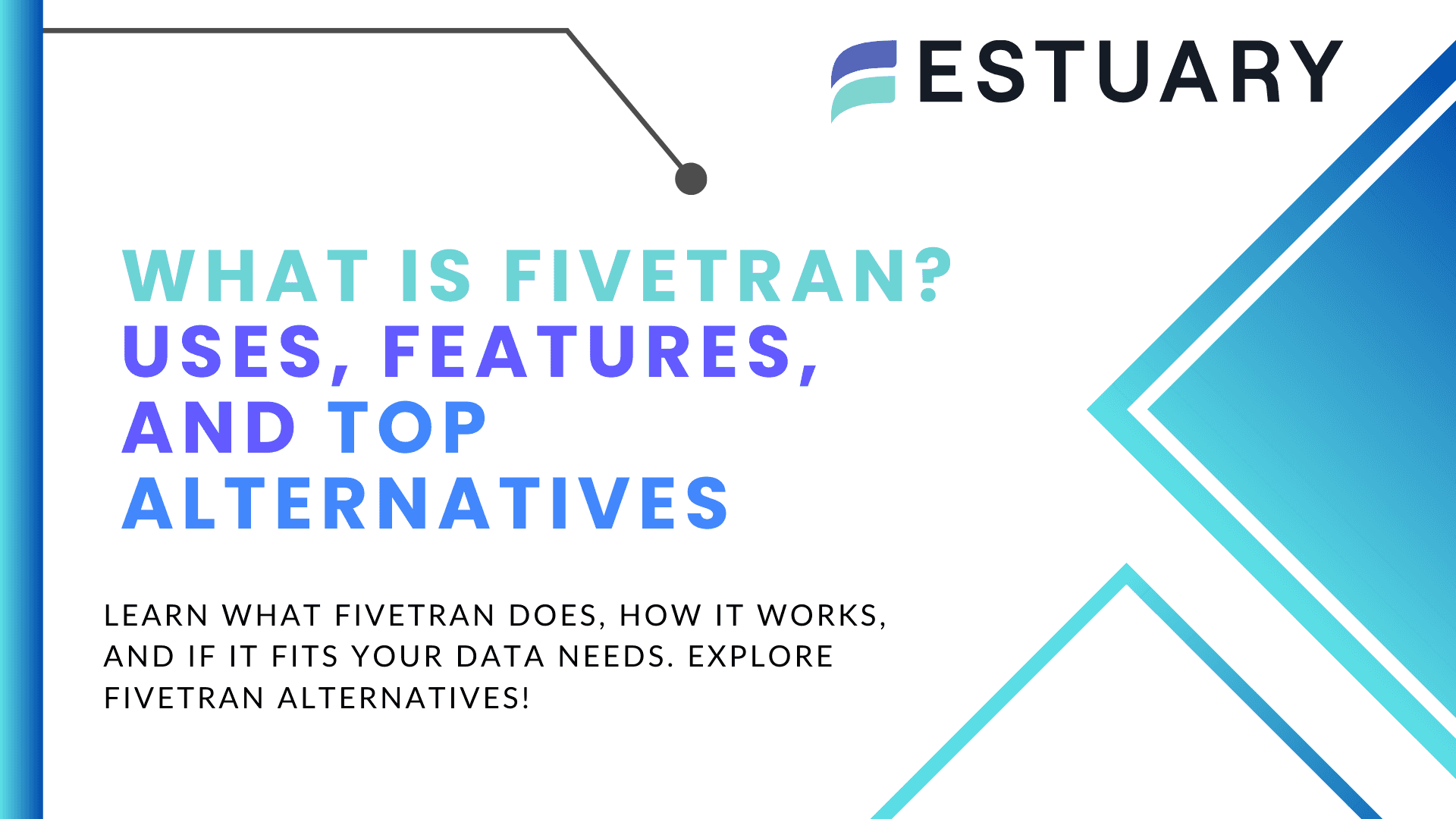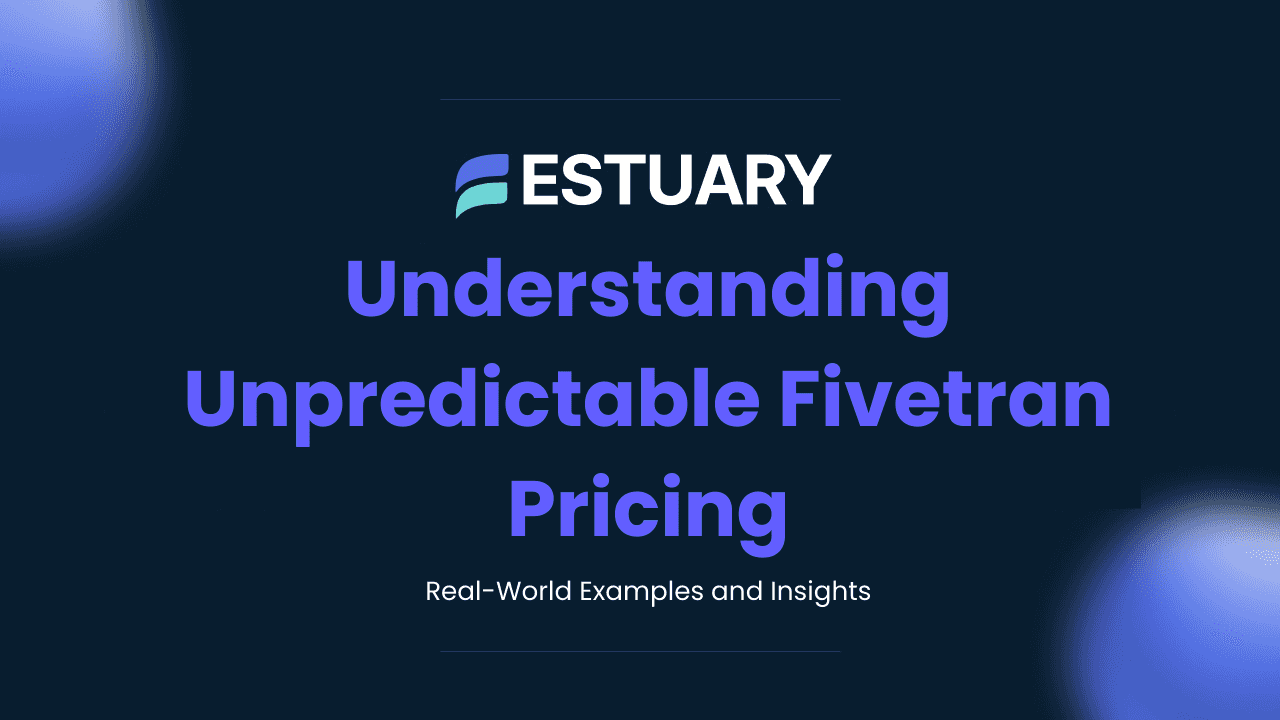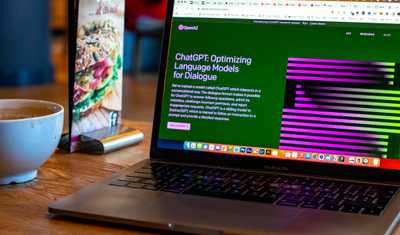
TLDR
- Fivetran is strong for simple, cloud based ELT, but many teams look for more control, better cost predictability, or real time options.
- The best Fivetran alternatives include Estuary, Airbyte, Debezium, Hevo Data, Matillion, Meltano, Stitch, Talend, Informatica, Striim, and Qlik Replicate.
- Estuary stands out for right time pipelines, Airbyte and Meltano for open source, Striim and Debezium for real time CDC, and Informatica or Talend for enterprise governance.
- Use this guide to match latency, cost, deployment, and connector needs to the right platform.
Introduction: Why Look Beyond Fivetran in 2025
Modern data teams are evaluating Fivetran alternatives because data integration needs have expanded far beyond batch loading into a warehouse. Companies now expect pipelines that support real-time and near real-time use cases, more control over schemas, predictable pricing, and deployment models that fit both cloud native and enterprise environments.
This guide provides a clear and complete comparison of the best Fivetran alternatives in 2025. You will find tools that support streaming CDC, open source ELT frameworks, enterprise integration platforms, and cost friendly SaaS options. Each option includes its strengths, tradeoffs, pricing model, and how it compares to Fivetran so you can choose the right fit for your stack.
Why teams evaluate Fivetran alternatives
Many teams value Fivetran for its simplicity, large connector catalog, and managed ELT experience. At the same time, organizations often consider alternatives when they need:
- Real-time or right time pipelines, not only scheduled batch
- Predictable costs for high change or high volume datasets
- More control over schemas, naming, and transformations
- Open source or self hosted deployment options
- Enterprise governance, data quality, or hybrid cloud support
- Integrations beyond warehouses and lakes
Next, we will look at Fivetran in more detail so the comparisons are easy to understand.
Fivetran in 2025: Strengths, Limits, and Pricing Model
Fivetran is one of the most popular cloud ELT platforms, known for its large connector library and easy setup. It is widely used for loading data from SaaS apps and databases into cloud warehouses with minimal engineering effort. Before comparing alternatives, it helps to understand where Fivetran is strong and where teams typically look for more flexibility.
What Fivetran Does
Fivetran provides fully managed ELT pipelines that extract data on a schedule and load it into destinations like BigQuery, Snowflake, and Databricks. It automates schema handling, normalization, error recovery, and routine connector updates, making it appealing for analytics teams that want simple, reliable ingestion.
Strengths
- Large connector catalog: Fivetran offers hundreds of prebuilt connectors for SaaS apps, databases, and events, which is one of the broadest selections in the category.
- Simple to operate: Pipelines require little maintenance and work without deep data engineering skills.
- Automatic schema evolution: Fivetran handles many schema changes automatically, reducing the need for manual fixes.
- Strong ecosystem integrations: It aligns closely with cloud warehouses and dbt, fitting well into the modern data stack.
Common Limitations
- Cost variability: Fivetran uses Monthly Active Rows pricing, which can be unpredictable for high change tables, normalized APIs, or many connectors.
- Batch oriented pipelines: Most connectors run on scheduled syncs, which may not meet real-time or operational analytics needs.
- Limited schema control: Fivetran normalizes and renames fields automatically, which can restrict modeling flexibility and DataOps workflows.
- SaaS only deployment: There is no self hosted or private cloud option, which some organizations require for security or compliance.
Pricing Overview
Fivetran’s pricing charges per Monthly Active Row for each connector, with different rates by connector type. Costs vary widely based on change rates and normalization. Most teams request a quote to understand expected spend.
How to Choose a Fivetran Alternative
Choosing the right Fivetran alternative depends on the type of data workloads you manage, the level of control your team needs, and how you balance performance, cost, and deployment flexibility. This section gives you a simple decision framework so you can narrow the list quickly.
Key Factors to Consider
Latency requirements
- Batch: Reporting, dashboards, BI pipelines
- Near real-time: Fresh analytics, micro batch updates
- Real-time: CDC, AI features, operational use cases
- Right time: Ability to choose the timing that fits your workloads
Connector coverage
Look for:
- The sources and destinations you need today
- Future expansion plans
- Quality and maturity of connectors, not only quantity
Data modeling approach
- ELT: Transform later in the warehouse
- ETL: Transform during ingestion
- Hybrid: Both ELT and ETL in a single pipeline
Control and extensibility
Evaluate how much ownership you need:
- Schema control and versioning
- Git based workflows and CI
- Custom connectors
- Transformation logic
- Reprocessing and replay
Deployment model
- Fully managed cloud
- Open source, self hosted
- Hybrid or private cloud
- Enterprise data center requirements
Cost structure
Look at pricing models:
- Per row
- Per volume (GB)
- Per event
- Per connector hour
- Subscription tiers
- Enterprise licensing
Cost predictability matters more as workloads grow.
Summary Table of Fivetran Alternatives
This table gives you a quick overview of the top Fivetran alternatives, including how each tool operates, where it works best, and what kind of pricing model it uses. Use this as a starting point before exploring the in depth breakdowns in the next section.
| Tool | Type | Latency Profile | Deployment Model | Best For | Pricing Model Snapshot |
|---|---|---|---|---|---|
| Estuary | Right time data platform (CDC, streaming, batch) | Sub second, near real time, batch | Fully managed cloud and private cloud | Real time and hybrid pipelines, multi destination sync, scalable CDC | Usage based pricing by data volume and connector runtime |
| Airbyte | ELT platform (open source and cloud) | Batch | Self hosted and cloud | Open source control, wide connector coverage, cost flexibility | Open source free, cloud usage based |
| Debezium | Open source CDC framework | Real time | Self hosted on Kafka Connect | Engineering teams building custom CDC pipelines | Free open source, infra and staffing costs only |
| Hevo Data | No code ELT and light ETL | Batch and micro batch | Cloud | Small teams that want fast setup and minimal maintenance | Event based pricing with tiered plans |
| Informatica | Enterprise ETL and data integration suite | Batch and near real time | Cloud, hybrid, and on premises | Large enterprises with governance and quality needs | Enterprise licensing, quote required |
| Matillion | Warehouse native ETL and ELT | Batch | Cloud and private cloud | Teams needing visual ETL and strong warehouse integration | Credit based pricing plus subscription |
| Meltano | Open source ELT framework | Batch | Self hosted | Developer first teams running ELT with CLI and config driven workflows | Free open source, infra and engineering effort |
| Stitch | Simple cloud ELT | Batch | Cloud | Lightweight ingestion into warehouses with easy setup | Row based tiered pricing |
| Striim | Real time CDC and streaming platform | Real time | Cloud and hybrid | High scale CDC from databases like Oracle and SQL Server | Usage based and subscription plans |
| Talend Data Fabric | Enterprise integration platform | Batch and streaming | Cloud and on premises | Enterprises needing integration, quality, and governance in one stack | Enterprise licensing, quote required |
| Qlik Replicate | CDC replication platform | Near real time | Cloud and on premises | Replication across mixed environments, legacy to cloud migration | Enterprise licensing, quote required |
Best Fivetran Alternatives in 2025
Here is a list of the top Fivetran alternatives and competitors:
1. Estuary
Estuary is the “right time data platform” that brings together real-time Change Data Capture (CDC), streaming, batch, and ELT/ETL pipelines in one system. Estuary enables you to choose when data moves — from sub-second to near real-time to batch — so you can support analytics, operations, and AI workloads.
Best for
- Data teams that require high-throughput, low-latency pipelines (e.g., real-time analytics, operational dashboards)
- Use cases where both streaming and batch ingestion are needed in the same platform
- Workloads that demand multiple destinations from a single pipeline (e.g., warehouse + lakehouse + AI system)
- Organizations seeking predictable cost models and deployment flexibility (public cloud, private cloud, or BYOC)
Key features
- Unified pipelines for CDC, streaming and batch within one platform.
- Connectors architecture: Supports capture (ingestion) from a wide variety of sources and materialization to various destinations, with many connectors open-source Docker images.
- Durable collections: Data is stored in collections backed by cloud storage (e.g., object store) and can be replayed / time-travelled, supporting both streaming and backfills.
- Schema control and evolution: Collections have keyed schemas, and the platform supports schema validation, evolution and data quality features.
- Flexible deployment: Options for fully managed SaaS, private cloud deployment (BYOC), data planes in customer VPCs—good for governance and compliance.
- Predictable cost and performance: Claims include sub-100ms latency for many pipelines, enterprise-grade reliability, and roughly 40-60% cost savings versus traditional models.
Advantages compared to Fivetran
- Latency & right-time: Estuary supports sub-second or near-real-time data movement, whereas Fivetran is predominantly scheduled batch.
- Unified model: One platform combining streaming, CDC, and batch gives flexibility; Fivetran is oriented to ELT/batch workloads.
- Multiple destination support: Estuary allows fanning out to multiple sinks (warehouse + lake + AI); many competitors focus on one destination per pipeline.
- Durable stream storage & replay: Because Estuary writes to collections in cloud object storage, you can backfill or re-process without hitting the original source again.
- Deployment flexibility: Private cloud / BYOC options give more control for regulated environments; Fivetran is purely SaaS.
- Transparent cost model: Estuary emphasizes cost predictability and elimination of MAR-style surprises; this is a common frustration with Fivetran.
Pricing snapshot
- Free tier: up to small volume (e.g., 2 connectors + 10 GB/month).
- Usage based: charges by data volume moved and connector runtime rather than purely per row per connector (MAR model) — making the cost more predictable.
- Private/Enterprise: Enterprise pricing available for large volume and private cloud deployments.
Verdict
If you are building pipelines where when your data arrives matters — whether it is sub-second real time, near real time, or scheduled batch — Estuary offers a modern, unified, and flexible alternative to Fivetran. It is especially strong when you need multi-destination pipelines, need private deployment, or expect high change volumes and want cost predictability. Compare in details: Estuary vs Fivetran
2. Airbyte
Airbyte is an open-source ELT platform that offers both a self hosted version and a fully managed cloud service. It provides a large connector ecosystem, driven by community and vendor contributions, and is designed for teams that want flexibility, extensibility, and control over pipelines.
Best for
- Engineering teams that prefer open-source tools
- Organizations that want to self host or customize connectors
- Cost conscious teams running many pipelines at moderate scale
- Teams that value community driven development
Key features
- Open source framework with hundreds of available connectors
- Cloud version for managed scaling and simplified operations
- Custom connector builder for creating new sources without full development cycles
- Support for normalization within the destination
- Scheduling, monitoring, and pipeline management through UI or API
- Extensible architecture suitable for internal customization
Advantages compared to Fivetran
- Open-source option allows full ownership and customization
- Flexible connector development through SDK and templates
- Community maintained connectors expand coverage rapidly
Pricing snapshot
- Open source: free to self host
- Airbyte Cloud: usage based pricing (per credit) with pay as you go model
- Custom connectors and workloads can be optimized for lower total cost
Verdict
Airbyte is a strong Fivetran alternative if you want open source control, flexible connector development, and the option to self host or run pipelines in the cloud. Compare in detail: Airbyte vs Fivetran
3. Debezium
Debezium is an open-source, log based Change Data Capture (CDC) platform that captures row level changes from databases and streams them into messaging systems, most commonly Apache Kafka. It runs as a set of Kafka Connect source connectors or as a standalone Debezium Server, reading transaction logs from databases like MySQL, PostgreSQL, SQL Server, MongoDB and others, and emitting ordered change events.
Best for
- Engineering teams already using Kafka or Kafka Connect
- Organizations that want full control of their CDC stack and infrastructure
- Low latency replication from OLTP databases into data lakes, warehouses, caches, or microservices
- Event driven architectures and streaming use cases where CDC drives downstream apps
Key features
- Log-based CDC: reads database transaction logs (binlog, WAL, etc.) for inserts, updates, and deletes with low overhead and low latency
- Connectors for major databases such as MySQL, PostgreSQL, SQL Server, Oracle, MongoDB and more
- Millisecond range delays for many use cases when configured correctly
- Optional initial snapshots to capture existing data state before streaming ongoing changes
- Multiple deployment options:
- As Kafka Connect source connectors
- As Debezium Server streaming to systems like Kafka, Pulsar, Kinesis, or Pub/Sub
- As an embedded engine inside Java applications
- Structured change events with before and after images, metadata such as transaction id, and support for schema evolution
Advantages compared to Fivetran
- Open-source and self hosted, with full control over infrastructure and configuration
- True log based CDC with very low latency, strongly suited for event driven and operational workloads
- Deep Kafka ecosystem integration via Kafka Connect, making it easy to plug into existing streaming stacks
- High flexibility in routing and processing events with downstream consumers, custom stream processing, and sink connectors
- No vendor lock in on a single SaaS platform, and no MAR style licensing
Pricing snapshot
Debezium itself is free and open source.
Total cost comes from:
- Operating Kafka or another messaging system
- Managing Kafka Connect or Debezium Server
- Engineering and DevOps effort to design, monitor, and maintain the pipelines
Verdict
Debezium is a top Fivetran alternative for teams that want a fully open source, low latency CDC stack built around Kafka. It is best suited for engineering heavy organizations that are comfortable managing their own streaming infrastructure.
4. Hevo Data
Hevo Data is a fully managed, no code data pipeline platform that helps teams move data from SaaS apps, databases, and file systems into cloud data warehouses. It focuses on fast setup, automation, and ease of use for analytics workloads.
Best for
- Small and mid sized teams that want a simple alternative to Fivetran
- Organizations with mostly batch and micro batch data needs
- Teams without dedicated data engineering resources
- Use cases where built in transforms are useful but not complex
Key features
- No code pipeline setup with more than 150 sources
- ETL and ELT support with in flight transformations
- Automatic schema mapping and monitoring
- Visual and script based transformation options
- Supports major warehouses such as Snowflake, BigQuery, and Redshift
- Simple UI for managing pipelines and workflow automation
Advantages compared to Fivetran
- No code interface suitable for non engineering teams
- Built in transformation options for ETL style workflows
- Event based pricing can be predictable for certain workloads
- Fast setup with minimal configuration
Pricing snapshot
- Free plan for small usage
- Paid plans priced by event volume with monthly or annual billing
- Exact pricing depends on projected event volume and workspace configuration
Verdict
Hevo Data is a straightforward, easy to use Fivetran alternative for teams focused on batch analytics who want a no code experience and built in transformations without managing infrastructure. Compare in details: Hevo vs Fivetran
5. Informatica
Informatica is one of the most established enterprise data integration platforms, offering a broad suite that includes ETL, ELT, data quality, governance, and master data management. Its cloud platform, Informatica Intelligent Data Management Cloud (IDMC), provides end to end data integration capabilities for complex enterprise environments.
Best for
- Large enterprises with strict data governance or compliance needs
- Organizations with hybrid or on premises systems that require advanced integration capabilities
- Teams that need sophisticated ETL, metadata management, and data quality tooling
- Enterprises consolidating multiple data management tools into one platform
Key features
- Enterprise grade ETL and ELT with advanced transformation logic
- Broad connector ecosystem for cloud, on premises, legacy, and enterprise systems
- Strong data quality, lineage, cataloging, and governance capabilities
- Hybrid and multi cloud deployment options
- Pushdown optimization for running transformations inside cloud warehouses
- Workflow orchestration and monitoring suited for enterprise teams
- Native support for large scale workloads with parallelism and high throughput
Advantages compared to Fivetran
- Much deeper ETL capabilities for complex, multi step transformations
- Strong governance and metadata management required in regulated industries
- Hybrid deployment options for connecting on premises and cloud systems
- Broader support for legacy enterprise technologies
- Robust workflow orchestration beyond basic scheduling
Pricing snapshot
- Informatica uses a consumption based and subscription licensing model
- Pricing varies significantly based on features, data volume, and deployment choices
- Quotes are typically provided through sales due to enterprise customizations
Verdict
Informatica is a powerful Fivetran alternative for large enterprises that require extensive ETL capabilities, governance, and hybrid deployments. While the platform is more complex and typically higher cost, it excels in environments where data quality, oversight, and large scale integration are mission critical. Compare in details: Informatica vs Fivetran
6. Matillion
Matillion is a cloud focused data integration platform that provides both ETL and ELT capabilities. It is known for its visual, job based interface and deep integration with cloud data warehouses like Snowflake, BigQuery, Redshift, and Databricks. Matillion offers two main products: Matillion ETL (instance based) and Matillion Data Productivity Cloud (fully managed).
Best for
- Data teams that want visual, component based ETL workflows
- Organizations standardized on warehouses such as Snowflake, Redshift, or BigQuery
- Teams that need complex transformations executed inside the warehouse
- Enterprises that want a managed ETL environment with orchestration features
Key features
- Visual job designer for building ETL pipelines using drag and drop components
- ELT capabilities with pushdown optimization to run transformations directly in the warehouse
- Broad support for data loading, transformations, scripting, and orchestration
- Integration with devops workflows such as versioning and environment promotion
- Connectors for SaaS apps, databases, files, and cloud services
- Managed SaaS option (Matillion Data Productivity Cloud) for pipeline operations
Advantages compared to Fivetran
- Strong ETL and transformation capabilities that go beyond simple ELT
- Visual interface helps teams build complex workflows without writing code
- Pushdown optimization leverages warehouse compute for performance
- Deep native integrations with major cloud data platforms
- Built in orchestration for multi step jobs and dependencies
Pricing snapshot
Pricing depends on compute credits or instance type based on product:
- Matillion ETL uses instance based licensing
- Matillion Data Productivity Cloud uses consumption credits
- Cost varies by workload size, cloud provider, and deployment model
- Exact pricing is available through sales or cloud marketplace listings
Verdict
Matillion is a strong Fivetran alternative for teams that want visual ETL, warehouse centric transformations, and powerful orchestration. It is ideal for organizations that rely heavily on Snowflake, BigQuery, Redshift, or Databricks and need more transformation depth than simple ELT pipelines.
7. Meltano
Meltano is an open-source, developer focused ELT framework built around the Singer specification. It provides a configuration driven approach for managing pipelines using YAML, the CLI, and Git. Meltano is designed for teams that want full control over connectors, transformations, and orchestration using open source tooling.
Best for
- Engineering teams that prefer code based pipeline development
- Organizations standardizing on open source data tooling
- Teams that want to version control and automate ELT workflows in Git
- Environments where custom connectors or deep extensibility are required
Key features
- Open source ELT framework powered by Singer taps and targets
- Supports both Singer connectors and Airbyte connectors through the Meltano SDK
- Configuration driven pipelines using YAML and CLI
- Built in orchestration options including Airflow, Dagster, and GitHub Actions
- Strong integration with dbt for warehouse transformations
- Extensible plugin architecture for adding connectors, utilities, and custom logic
- Git based workflow for versioning, CI, and promotion
Advantages compared to Fivetran
- Fully open source and self hosted, offering complete control
- Connects to a wide range of taps and targets from the Singer ecosystem
- Highly customizable with no dependency on SaaS limitations
- Strong fit for DevOps and GitOps workflows
- Flexible deployment options, from local development to production orchestrators
Pricing snapshot
- Completely free and open source to use
- Total cost depends on infrastructure and engineering resources for hosting, scaling, monitoring, and maintenance
Verdict
Meltano is a powerful Fivetran alternative for engineering heavy teams that want a fully open source, code centric ELT framework. It offers maximum control and extensibility, especially for teams already working with Singer connectors or DevOps tooling.
8. Stitch
Stitch is a simple, cloud based ELT platform originally built on the open-source Singer framework. Now part of Qlik, Stitch focuses on providing fast, easy data loading into cloud data warehouses with minimal configuration. It is designed for lightweight analytics pipelines rather than complex transformation workflows.
Best for
- Small teams that want a straightforward ELT solution
- Organizations with primarily batch data requirements
- Users who prefer a simple UI over complex configuration
- Environments where quick setup is more important than advanced features
Key features
- Easy setup for ELT pipelines using a clean, intuitive interface
- Connectors for more than 100 sources, including SaaS tools and databases
- Automatic schema detection and simple schema management
- Incremental replication for supported sources
- Integrates with major warehouses such as Snowflake, BigQuery, Redshift, and Azure Synapse
- Based on Singer, allowing teams to extend pipelines with additional taps and targets
Advantages compared to Fivetran
- Simpler user experience for small or straightforward projects
- Lower learning curve with minimal configuration
- Predictable pricing for modest workloads
- Good option for teams that want a basic, SaaS based ELT tool without engineering overhead
Pricing snapshot
- Tiered pricing based on monthly row volume
- Lower entry point than many enterprise tools
- Higher tiers available for larger workloads
- Exact pricing varies by row count and plan selection
Verdict
Stitch is a solid Fivetran alternative for smaller teams and simple analytics pipelines that need fast onboarding and minimal maintenance. It is best for lightweight batch workflows and organizations that value simplicity over advanced functionality.
Also Read: Stitch Data Alternatives
9. Striim
Striim is a real time data integration and streaming platform that uses Change Data Capture to continuously move data from operational systems into cloud warehouses, analytics platforms, and other targets. It supports both a fully managed SaaS offering (Striim Cloud) and a self managed Striim Platform for on premises or customer cloud deployments.
Best for
- Organizations that need low latency CDC from databases like Oracle, SQL Server, PostgreSQL, and MySQL
- Hybrid and multi cloud environments that mix legacy and cloud systems
- Teams building real time analytics, AI, fraud detection, customer personalization, or operational dashboards
Key features
- Log based CDC from major relational databases and other enterprise systems
- Streaming SQL (TQL) for filtering, transformation, enrichment, and correlation on data in motion
- Sub second to low second latency for many real time workloads
- 150 plus connectors for sources and targets
- High availability, fault tolerance, and monitoring for mission critical pipelines
- Deployment options: fully managed Striim Cloud on AWS, Azure, and Google Cloud, or self managed Striim Platform in your own environment
Advantages compared to Fivetran
- Built for real time streaming and CDC rather than only scheduled batch
- Strong support for legacy enterprise databases, especially Oracle and SQL Server, with high performance CDC
- In flight processing using streaming SQL, so some transformation and analytics can happen before data reaches the destination
Pricing snapshot
- Free developer or community tier with an events limit for evaluation and smaller use cases
- Paid plans are usage based, typically metered on events, compute, and data transfer, with enterprise tiers available for larger workloads
- Exact pricing depends on edition (Striim Cloud vs self managed) and expected volume, and is usually finalized through sales
Verdict
Striim is a strong Fivetran alternative for enterprises that need real time CDC and streaming analytics from critical databases into modern cloud platforms. It is best for teams that value low latency, hybrid deployment options, and in stream processing capabilities. Compare in detail: Striim vs Fivetran
10. Talend
Talend Data Fabric is an enterprise data management platform that unifies data integration, data quality, and data governance in a single environment. It is now part of the Qlik portfolio and is delivered as a client managed platform that runs across cloud, on premises, and hybrid environments.
Best for
- Large organizations that need a unified solution for integration, quality, and governance
- Enterprises with complex, distributed data landscapes across multiple systems
- Teams that must enforce data standards, lineage, and compliance policies
- Hybrid environments mixing cloud warehouses, lakes, and on premises systems
Key features
- Data integration for batch and real-time patterns, including ETL and ELT, APIs, and event driven flows
- Built in data quality tools such as profiling, cleansing, and validation
- Governance capabilities including cataloging, lineage tracking, and policy management
- Support for multi cloud and hybrid deployments, with client managed control over infrastructure
- Visual design tools and low code interfaces for building and managing data flows
Advantages compared to Fivetran
- Combines integration, quality, and governance in one platform rather than focusing mainly on ELT
- Strong governance, cataloging, and policy enforcement for regulated industries
- Hybrid and on premises support for environments that are not cloud only
- Flexible integration patterns beyond warehouse loading, including APIs and real time use cases
Pricing snapshot
- Pricing is enterprise oriented and quote based
- Cost depends on deployment model, features licensed, data volume, and users
- There is no simple public price list, so most buyers work through sales
Verdict
Talend Data Fabric is a strong Fivetran alternative for enterprises that need more than ELT, especially where data quality, governance, and hybrid deployments are top priorities. It is best suited to larger organizations that can invest in an enterprise platform and want a single environment for integration and data management.
11. Qlik Replicate
Qlik Replicate is a high performance data replication and Change Data Capture (CDC) platform that continuously moves data from transactional systems into data warehouses, lakes, and streaming platforms. It focuses on log based CDC and full load replication for a wide range of enterprise sources and targets.
Best for
- Enterprises that need reliable CDC from core databases such as Oracle, SQL Server, DB2, PostgreSQL, and SAP sources
- Hybrid and multi platform environments with a mix of on premises and cloud systems
- Teams modernizing analytics and BI while keeping legacy systems as systems of record
- Organizations that want a dedicated replication tool managed in their own environment
Key features
- Full load and CDC processes to both initialize and continuously update target systems
- Broad endpoint support for relational databases, cloud data warehouses, data lakes, and some file and streaming targets
- Agentless, log based CDC to minimize impact on production systems
- Web based console for configuring, monitoring, and managing replication tasks
- Scalable, multi server and multi threaded architecture designed for large enterprise workloads
- Enterprise wide monitoring and control for multiple tasks and endpoints
Advantages compared to Fivetran
- Strong focus on real time CDC and replication for traditional enterprise databases
- Proven support for on premises and hybrid environments, not only cloud warehouses
- Detailed control over replication tasks, latency, and mapping at the endpoint level
- Installed and managed within your environment, which can help meet strict security and compliance requirements
Pricing snapshot
- Licensed as an enterprise software product
- Pricing is quote based and depends on number and type of endpoints, environments, and scale
- Often purchased as part of a broader Qlik data integration strategy
Verdict
Qlik Replicate is a strong Fivetran alternative for enterprises that prioritize robust CDC from core databases and need to manage replication across hybrid environments. It is best suited for organizations that want a dedicated replication engine rather than a purely SaaS based ELT tool.
Summary Table of Fivetran Alternatives
This table gives you a quick overview of the top Fivetran alternatives, including how each tool operates, where it works best, and what kind of pricing model it uses.
| Tool | Type | Latency Profile | Deployment Model | Best For | Pricing Model Snapshot |
|---|---|---|---|---|---|
| Estuary | Right time data platform (CDC, streaming, batch) | Sub second, near real time, batch | Fully managed cloud and private cloud | Real time and hybrid pipelines, multi destination sync, scalable CDC | Usage based pricing by data volume and connector runtime |
| Airbyte | ELT platform (open source and cloud) | Batch | Self hosted and cloud | Open source control, wide connector coverage, cost flexibility | Open source free, cloud usage based |
| Debezium | Open source CDC framework | Real time | Self hosted on Kafka Connect | Engineering teams building custom CDC pipelines | Free open source, infra and staffing costs only |
| Hevo Data | No code ELT and light ETL | Batch and micro batch | Cloud | Small teams that want fast setup and minimal maintenance | Event based pricing with tiered plans |
| Informatica | Enterprise ETL and data integration suite | Batch and near real time | Cloud, hybrid, and on premises | Large enterprises with governance and quality needs | Enterprise licensing, quote required |
| Matillion | Warehouse native ETL and ELT | Batch | Cloud and private cloud | Teams needing visual ETL and strong warehouse integration | Credit based pricing plus subscription |
| Meltano | Open source ELT framework | Batch | Self hosted | Developer first teams running ELT with CLI and config driven workflows | Free open source, infra and engineering effort |
| Stitch | Simple cloud ELT | Batch | Cloud | Lightweight ingestion into warehouses with easy setup | Row based tiered pricing |
| Striim | Real time CDC and streaming platform | Real time | Cloud and hybrid | High scale CDC from databases like Oracle and SQL Server | Usage based and subscription plans |
| Talend Data Fabric | Enterprise integration platform | Batch and streaming | Cloud and on premises | Enterprises needing integration, quality, and governance in one stack | Enterprise licensing, quote required |
| Qlik Replicate | CDC replication platform | Near real time | Cloud and on premises | Replication across mixed environments, legacy to cloud migration | Enterprise licensing, quote required |
Conclusion: Choosing the Right Fivetran Alternative
Choosing a Fivetran alternative depends on the shape of your data workloads, how fresh your data needs to be, and how much control you want over cost, deployment, and transformations. Modern data teams often evaluate multiple tools because no single platform is perfect for every scenario.
If your needs revolve around batch analytics, simpler pipelines, or open source control, tools like Airbyte, Meltano, Hevo Data, or Stitch can be strong fits. For enterprises that need governance, quality, or hybrid deployment, platforms like Informatica, Talend Data Fabric, and Qlik Replicate offer the depth and compliance features expected at large scale. Teams already invested in streaming or distributed architectures often lean toward Debezium or Striim.
If you want a modern platform that covers real time, near real time, and batch in one place while offering predictable pricing and multi destination pipelines, Estuary delivers a strong balance of simplicity, performance, and flexibility. Its right time approach lets you choose when data moves, which is increasingly important as organizations blend operational and analytical workloads. Estuary also provides deployment options suitable for enterprise environments, including private cloud setups and support for larger scale durability, governance, and reliability requirements.
Getting started with Estuary
If you want to try Estuary as a right time alternative to Fivetran, it is easy to get started:
- Create a free account and connect a source and destination to test a simple pipeline.
- Follow the getting started guides in the documentation to explore CDC, streaming, and batch use cases.
- Join the community Slack to ask questions and see how other teams use Estuary in production.
- Watch an Estuary 101 walkthrough or request a live session if you prefer a guided tour for your team.
This approach lets you validate how Estuary fits your stack before you commit to any broader migration.
Related Top Tools Blogs:
FAQs
Which Fivetran alternative is the most cost effective?
Which Fivetran alternative works best with Snowflake?

About the authors
With over 15 years in data engineering, a seasoned expert in driving growth for early-stage data companies, focusing on strategies that attract customers and users. Extensive writing provides insights to help companies scale efficiently and effectively in an evolving data landscape.
Rob has worked extensively in marketing and product marketing on database, data integration, API management, and application integration technologies at WS02, Firebolt, Imply, GridGain, Axway, Informatica, and TIBCO.


